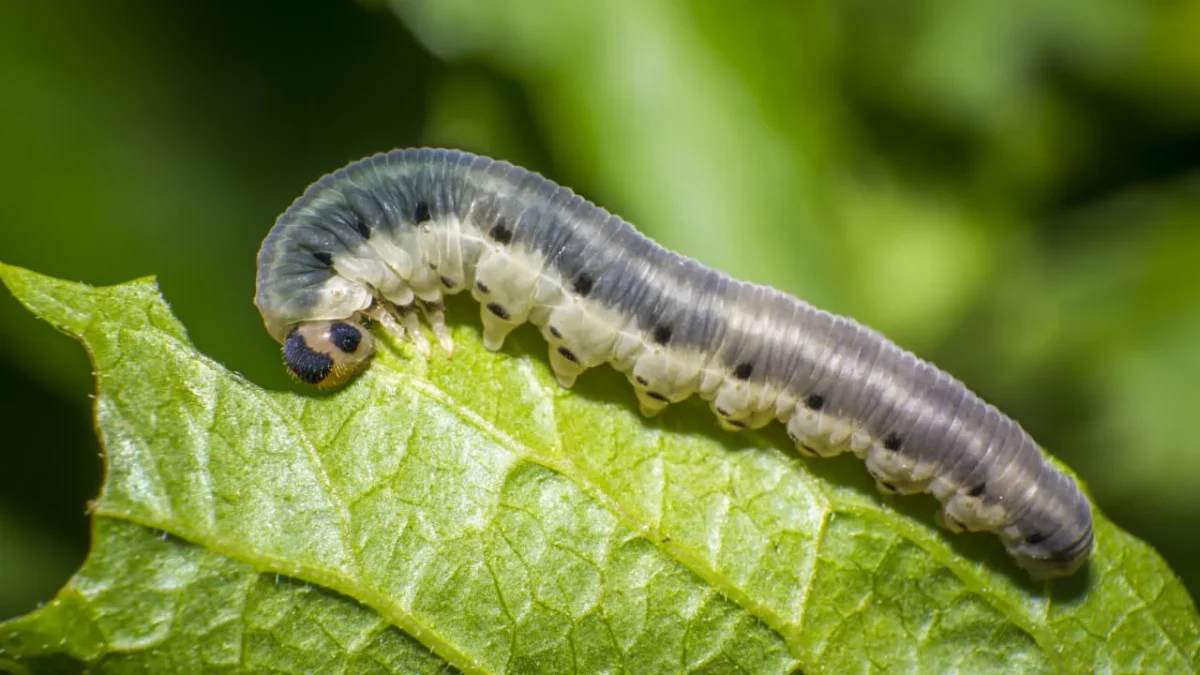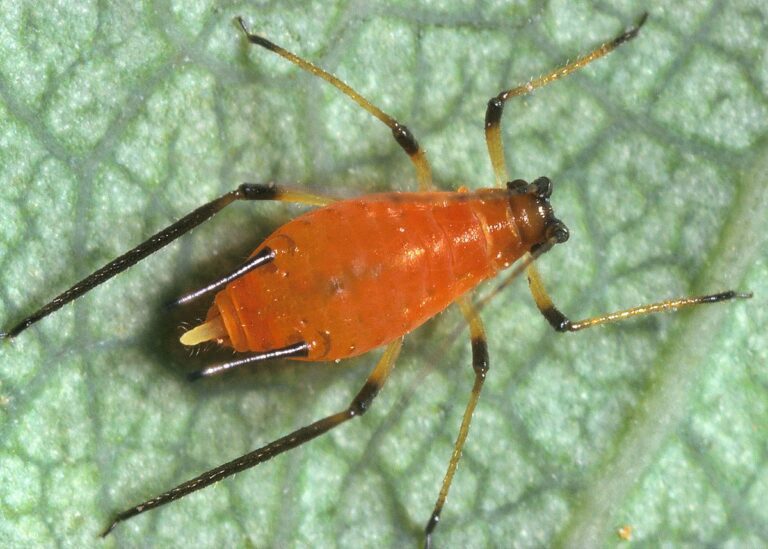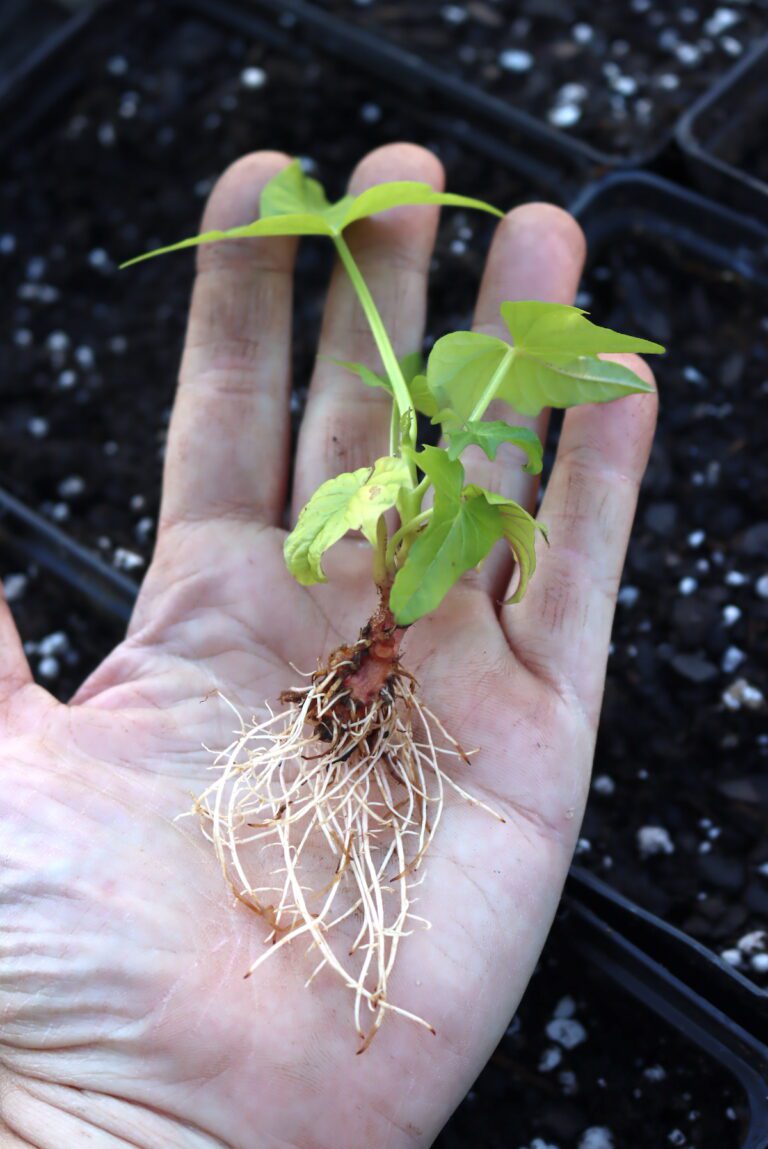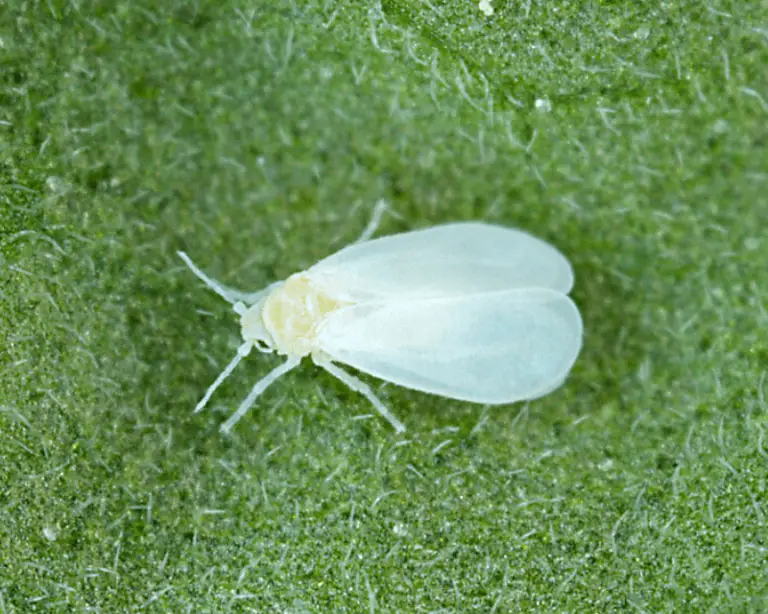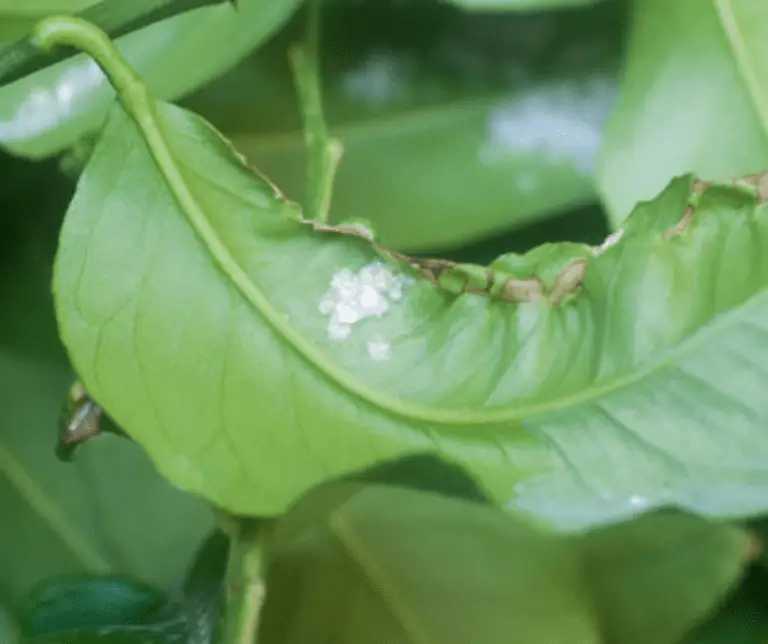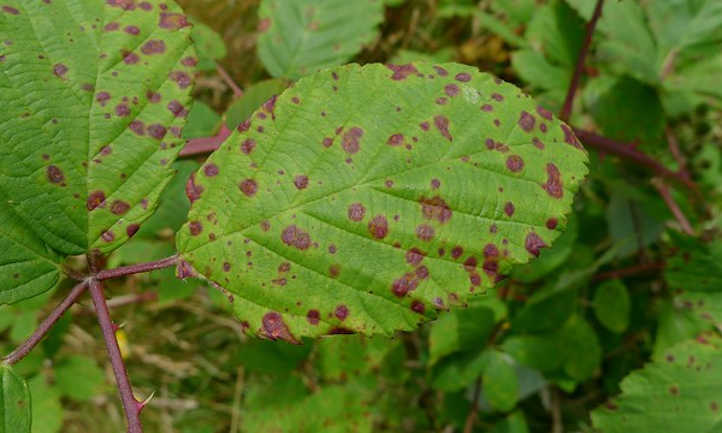Cutworms: Identification and Control in Your Garden
Life Cycle of Cutworms
Cutworms, also known as armyworms, are common pests that can cause significant damage to your garden. Understanding the life cycle of these insects is essential for effective pest management. Cutworms go through four main stages of development: egg, larva, pupa, and adult.
Adult cutworms are moths that lay their eggs on diverse surfaces, such as leaves, stems, and even soil. The eggs are usually laid in clusters and can be identified as small, white spheres. After a period of approximately one to three weeks, the eggs hatch, and the larvae emerge.
During the larval stage, the cutworms begin feeding on nearby plants. They are most active during the night, hiding in the soil during the day. Larvae go through several molts as they grow, with each molt marking a new developmental stage. This feeding period can last anywhere from three weeks to several months, depending on the species and environmental conditions.
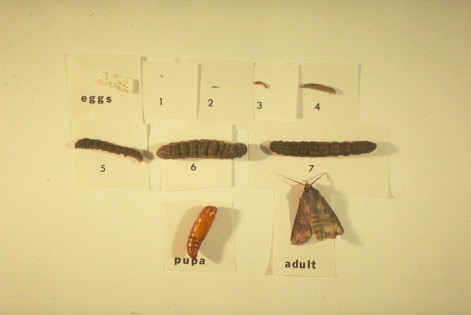
As the larvae reach maturity, they enter the pupal stage, during which they transform into adult moths. The pupae are usually found in the soil, where they spend a variable amount of time before emerging as fully developed moths. Once the adults emerge, the cycle restarts as they begin mating and laying eggs, completing the life cycle of cutworms.
Understanding the life cycle of cutworms is essential for timing and implementing control measures effectively. By knowing when the eggs hatch and the larvae are most active, you can take appropriate actions to prevent and manage their infestation. In the following sections, we will explore various strategies to manage cutworms and protect your garden from their destructive feeding habits.
Understanding Cutworm Behavior
Cutworms are nocturnal creatures that belong to the moth family Noctuidae. These pests derive their name from their behavior of cutting off young plants at or just below the soil surface, leading to severe damage in gardens and agricultural fields. Understanding cutworm behavior is crucial for effectively managing and preventing infestations.
Cutworms typically feed on a wide variety of host plants, but some species have specific preferences. For example, the bronzed cutworm prefers grasses, while the army cutworm targets cereal crops. These pests are most active at night, hiding under soil clumps or debris during the day. At nightfall, they emerge to feed on plants, using their strong jaws to sever stems or roots. The severed plants often topple over, resulting in their characteristic “cut” appearance.
To better understand the behavior of cutworms, it is essential to consider their life cycle. Cutworms undergo complete metamorphosis, progressing through egg, larva, pupa, and adult stages. The adult moths lay their eggs on plants or in the soil, and these eggs hatch into larvae, which are the destructive stage of the cutworm’s life cycle. Larvae go through several instar stages, gradually increasing in size until they become fully grown. Understanding the life cycle and behavior of cutworms is crucial for implementing effective control measures and preventing significant damage to your garden or crops.
Damage Caused by Cutworms
Cutworms can cause significant damage to gardens and crops, leading to major losses for gardeners and farmers alike. These caterpillars are known for their voracious appetite and can quickly consume the tender stems and leaves of young plants. Their feeding activity is most prevalent during the night, making it even more challenging to detect and control their presence.
When cutworms attack plants, they typically sever them at the base, resulting in a condition known as “cutting off” or “cutting down.” This process can leave the entire plant wilted and destroyed, with no chance of recovery. In severe cases, a single cutworm can damage multiple plants, leading to substantial losses in agricultural production.
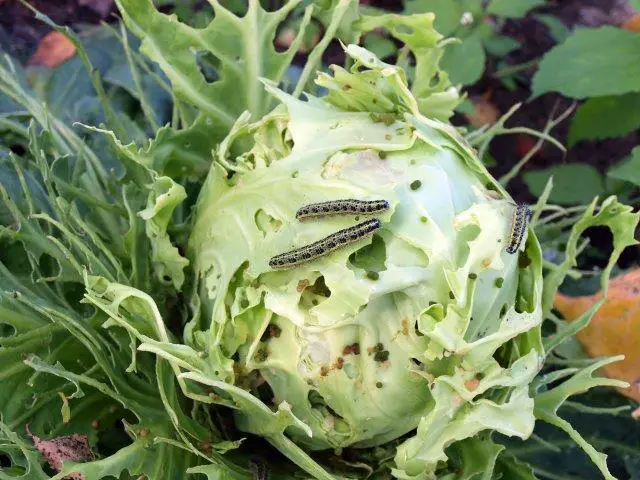
The damage caused by cutworms is not limited to their ability to destroy plants directly. The loss of vegetation can disrupt the delicate balance of the ecosystem, affecting other organisms that rely on these plants for food and shelter. Additionally, the economic impact of cutworm infestations can be significant, with farmers having to invest time, resources, and money in controlling these pests to minimize further damage to their crops.
To effectively manage cutworm damage, it is crucial for gardeners and farmers to understand the signs of infestation and implement appropriate control measures. The next section will explore the indications of cutworm infestation in your garden, allowing you to detect them timely and take necessary action to mitigate their impact.
Signs of Cutworm Infestation in Your Garden
Cutworms are destructive pests that can wreak havoc in your garden, causing significant damage to your plants. Spotting the signs of cutworm infestation early on is crucial in order to take prompt action and prevent further destruction. One of the most obvious indicators of cutworm presence is the appearance of seedlings that have been severed at the soil level. These voracious pests primarily feed at night, burrowing just beneath the soil’s surface during the day. Therefore, if you notice young plants suddenly wilting, collapsing, or appearing cut or chewed off near the ground, it is likely that cutworms are the culprits.
An additional sign of cutworm infestation to look out for is the presence of cutworm larvae. These caterpillar-like creatures are usually gray or brown in color and can measure up to 2 inches in length. Their ample size makes them easy to spot, especially if you conduct regular inspections of your garden. You may find them curled up in the soil during the day or feeding on plant stems and leaves during the night. Keep in mind that cutworm larvae have the ability to curl into a tight “C” shape when disturbed, providing them with some protection. Therefore, be prepared to dig a little deeper and search beneath the soil surface to find these elusive garden pests.
The table below shows the sogns of cutworms infestations:
| Sign of Cutworm Infestation | Description |
|---|---|
| Wilting or Damaged Seedlings | Cutworms typically feed on the stems of young plants near the soil surface, causing them to wilt, droop, or appear chewed off at the base. Seedlings may appear damaged or severed. |
| Presence of Cutworms | Cutworms are nocturnal and may be difficult to spot during the day. However, you may find them curled up near the base of plants, under debris, or in the soil around affected plants. |
| Irregular Plant Damage | Cutworms often chew irregularly shaped holes in the leaves of plants, particularly near the ground. They may also girdle the stems of plants, causing them to collapse or break at the soil line. |
| Sawdust-like Frass | Cutworms may leave behind small piles of sawdust-like excrement, known as frass, near the base of plants they have been feeding on. This can be a sign of their presence even if the cutworms themselves are not visible. |
| Damage at Soil Surface | Cutworms typically feed near the soil surface, so you may notice signs of damage, such as notches or holes, on the lower portions of plant stems. Damage may be more severe on plants located along the edges of the garden. |
| Missing Plants or Seedlings | Cutworms can sever the stems of young plants entirely, causing them to collapse and die. If you notice missing plants or seedlings in your garden, particularly overnight, cutworms may be the culprit. |
| Emergence of Adult Moths | Cutworms are the larvae of certain moth species. If you notice an increase in moth activity around your garden, particularly at dusk or dawn, it may indicate that cutworms are present and laying eggs that will hatch into larvae. |
Natural Predators of Cutworms
Natural predators play a vital role in controlling the population of cutworms, helping to maintain a healthy balance in your garden ecosystem. A diverse range of predators, both insects and animals, actively hunt and feed on cutworms, keeping their numbers in check.
One of the most effective natural predators of cutworms is the ground beetle. These insects are nocturnal hunters and have a voracious appetite for cutworm larvae. Ground beetles are known for their ability to dig into the soil and locate cutworms, devouring them with great efficiency. Encouraging ground beetles in your garden can be achieved by providing them with a suitable habitat, such as leaf piles or low-growing plants, and avoiding excessive pesticide use.
Another notable predator of cutworms is the parasitic wasp. These wasps lay their eggs on cutworms, and when the eggs hatch, the wasp larvae feed on the cutworm, eventually causing its demise. Additionally, birds such as robins, blue jays, and sparrows are known to feed on cutworms, especially during their breeding seasons when they require substantial energy for raising their young. By attracting and providing suitable habitats for these avian predators, you can significantly reduce the cutworm population in your garden.
By harnessing the power of these natural predators, gardeners can effectively manage cutworm populations without relying on chemical interventions. Employing strategies that encourage the presence of ground beetles, parasitic wasps, and birds in your garden can provide long-term, sustainable control of cutworms while promoting a healthy and balanced ecosystem.
Preventing Cutworm Infestation in Your Garden
One of the most effective ways to prevent cutworm infestation in your garden is by implementing cultural practices that discourage these pests. Firstly, it is crucial to practice proper sanitation in your garden. Remove any debris, weeds, and decaying plant matter that can serve as hiding places and breeding grounds for cutworms. Regularly clean and maintain your garden beds, ensuring that there are no food sources or favorable conditions for cutworms to thrive.
In addition, consider using crop rotation techniques to disrupt the life cycle of cutworms. Cutworms are known to favor certain plant species, so by rotating crops each growing season, you can avoid creating a favorable environment for these pests. By planting different plants in the same area, you introduce variety and deter cutworms from establishing a strong presence in your garden. This method is particularly effective since it disrupts the pests’ feeding patterns and limits their ability to find suitable host plants.
Choosing Resistant Plant Varieties
Planting resistant varieties is an effective strategy to combat cutworm infestation in your garden. Resistant plant varieties possess natural defenses that make them less attractive to cutworms. By incorporating these varieties into your garden, you can significantly reduce the risk of damage caused by these voracious pests.
When selecting resistant plant varieties, it is crucial to consider the specific types of cutworms that commonly affect your region. Different species of cutworms may have varying preferences for certain plants. By researching and choosing varieties known to be resistant to the specific cutworm species prevalent in your area, you can maximize the effectiveness of this control method.
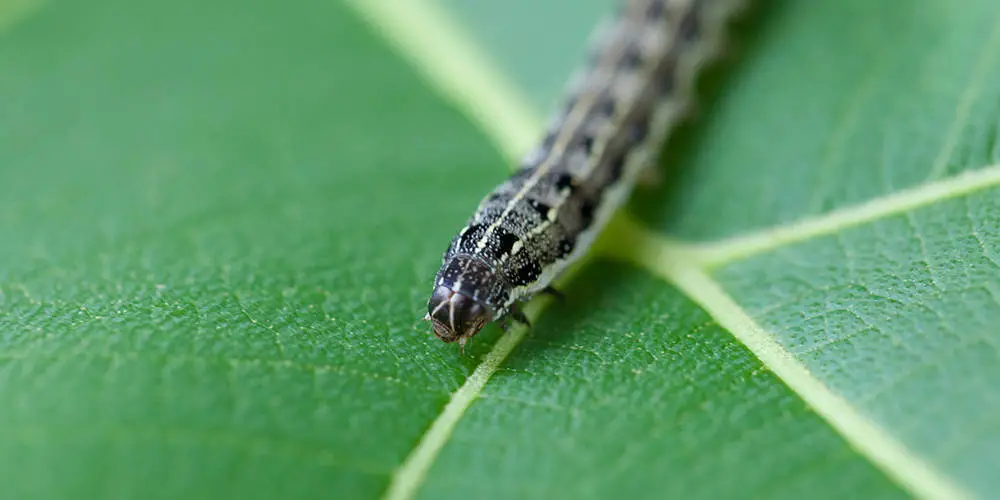
Resistant plant varieties not only help deter cutworms, but they also offer other benefits to your garden. These plants are often more vigorous and better equipped to withstand various environmental stresses. Additionally, they may exhibit improved disease resistance, higher yields, or enhanced flavor qualities. By incorporating resistant varieties into your garden, you can achieve a double advantage of pest management and overall plant health promotion.
Cultural Practices to Control Cutworms
Cultural practices play a crucial role in controlling cutworms in your garden. By implementing these practices, you can effectively manage and reduce the population of these pests. One effective cultural practice is maintaining clean and weed-free garden beds. Cutworms thrive in weedy areas where they can find shelter and food. By regularly removing weeds and keeping the area clean, you create an unfavorable environment for cutworms to flourish.
Another important cultural practice is practicing proper garden sanitation. Cleaning up garden debris, fallen leaves, and other organic matter helps eliminate potential hiding places for cutworms. By keeping the garden area tidy and free from clutter, you minimize the chances of cutworms finding suitable habitats.
Moreover, practicing crop rotation can significantly deter cutworm infestations. Cutworms tend to prefer certain plant species, and by rotating your crops each season, you can disrupt their life cycle. This method prevents cutworms from becoming well-established, as they struggle to find their preferred host plants. Additionally, intercropping, which involves planting different crops together, can confuse cutworms and make it more challenging for them to locate their target plants.
In conclusion, cultural practices such as maintaining clean and weed-free garden beds, practicing good garden sanitation, and implementing crop rotation techniques can help control cutworm populations in your garden. By actively engaging in these practices, you create an environment that is less favorable for the pests and disrupt their life cycle, ultimately reducing their impact on your plants.
Implementing Crop Rotation Techniques
Crop rotation is a beneficial technique that can help control cutworm populations and maintain healthy garden soil. By rotating your crops each season, you can disrupt the cutworm’s life cycle and reduce their numbers over time. This practice involves planting different plant families in different areas of your garden each year.
When implementing crop rotation techniques, it is important to consider the life cycle of cutworms. These pests usually lay their eggs in the soil during the fall or early spring. The eggs then hatch into larvae, which feed on the roots and stems of young plants. By rotating your crops, you can prevent the larvae from finding a suitable host plant, ultimately reducing their ability to cause significant damage. Additionally, planting crops that are not attractive to cutworms in areas where they were previously present can help discourage their activity and lower the risk of infestation.
Physical Barriers for Cutworm Control
When it comes to protecting your garden from cutworms, physical barriers can be an effective solution. By creating a physical barrier around your plants, you can prevent cutworms from reaching them and causing damage. There are several options available for physical barriers, including collars and protective screens.
Collars are a simple yet effective way to keep cutworms at bay. Made from materials such as cardboard or plastic, these collars are placed around the base of the plant, creating a barrier that cutworms cannot crawl over. Ensure that the collar is inserted into the soil at least an inch deep to prevent the cutworms from burrowing underneath it. This method works particularly well for smaller plants such as seedlings or transplants.
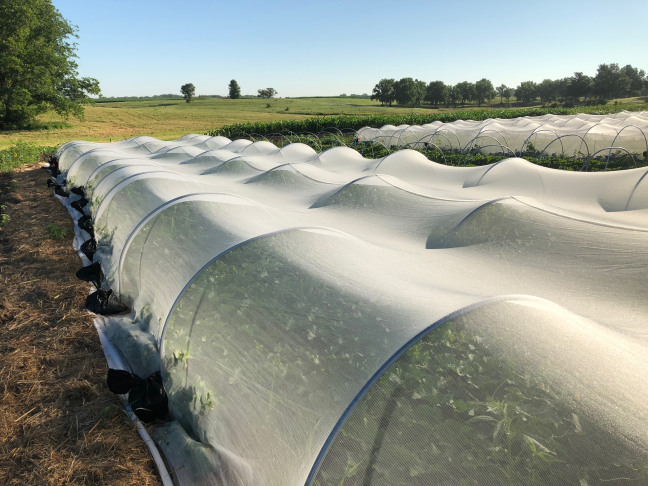
Another option is using protective screens, which can be placed over your garden beds or individual plants. These screens are typically made from fine mesh or netting, which effectively blocks cutworms from accessing your plants. Be sure to secure the screens tightly to the ground to prevent any gaps that the cutworms could exploit. Additionally, regular inspection and maintenance of the screens is crucial to ensure that they remain intact and effective.
Using Biological Controls for Cutworm Management
Biological controls offer a sustainable and environmentally-friendly approach to managing cutworm populations in your garden. By harnessing the power of natural predators, you can effectively control these voracious pests without resorting to chemical pesticides. Some of the most effective biological control agents for cutworm management include beneficial nematodes, parasitic wasps, and predatory ground beetles.
Beneficial nematodes, specifically Steinernema spp. and Heterorhabditis spp., are microscopic roundworms that target cutworm larvae in the soil. These nematodes infect the larvae, releasing bacteria that kill the host within a few days. They reproduce inside the dead larvae, continuing the cycle and reducing the population of cutworms over time. When applying beneficial nematodes, it is crucial to follow the instructions provided by the supplier, as temperature, soil moisture, and timing are factors that can influence their effectiveness.
Parasitic wasps, such as the braconid wasp (Apanteles spp.) and the tachinid fly (Cyzenis albicans), play a crucial role in regulating cutworm populations. The female wasps lay their eggs inside cutworm larvae, and the developing wasp larvae consume the host, eventually killing it. Adult parasitic wasps emerge from the dead cutworm larvae, ready to seek out new hosts. Introducing these beneficial insects into your garden can significantly reduce cutworm numbers and help maintain a balanced ecosystem.
Predatory ground beetles, including Carabidae species, are nocturnal hunters that feed on cutworms and other garden pests. These beetles are attracted to cutworm larvae by their pheromones and actively search for them in the soil. By creating favorable habitat conditions for these beetles, such as providing ground cover, mulching, and avoiding excessive use of chemical pesticides, you can encourage their presence and enhance natural cutworm control.
Implementing biological controls for cutworm management not only helps maintain a healthy and thriving garden, but also promotes the overall biodiversity and resilience of your growing space. By adopting these natural predators, you can reduce your reliance on synthetic pesticides and contribute to a more sustainable and environmentally-conscious gardening approach. So, consider incorporating beneficial nematodes, parasitic wasps, and predatory ground beetles into your pest management strategy and reap the rewards of a thriving garden ecosystem.
Chemical Control Options for Cutworms in Your Garden
Chemical control options can be an effective approach to managing cutworms in your garden. These pests can cause significant damage to your plants, stunting growth or even killing them. By using appropriate pesticides, you can target cutworms directly and minimize their negative impact.
One commonly used chemical control option for cutworms is the application of insecticides. These products contain specific chemicals that are toxic to the pests. When applied according to the manufacturer’s instructions, insecticides can effectively kill cutworms and reduce their population in your garden. It is important, however, to choose a pesticide that is labeled for use against cutworms and to follow the recommended rates and application timings to ensure safety and efficacy. Additionally, it’s crucial to be mindful of potential environmental impacts, so be sure to check for any restrictions or precautions indicated on the product label.
Another chemical control method for cutworms is the use of baits. These baits are usually formulated with insecticides and attractants that entice cutworms to feed on them. Once ingested, the insecticide takes effect and eliminates the pests. Baits can be placed directly near plants or around the perimeter of your garden to target cutworms as they move. An advantage of using baits is that they can be effective in both conventional and organic gardening practices.
Before incorporating any chemical control option, it’s crucial to consider the potential impacts on beneficial insects, wildlife, and the environment. It is best to explore other alternative control methods, such as cultural practices or biological controls, before resorting to chemicals. Nonetheless, when used judiciously and in accordance with recommended guidelines, chemical control options can be a valuable tool in managing cutworm infestations and protecting your garden.
Safe and Effective Pesticides for Cutworm Control
Safe and effective pesticides are a valuable tool in controlling cutworm infestations in your garden. When used correctly, these products can help protect your plants from the destructive feeding habits of these pests. However, it is important to note that pesticide use should always be approached with caution and in accordance with label instructions.
One commonly used pesticide for cutworm control is Bacillus thuringiensis (Bt), a naturally occurring bacteria that is toxic to many species of caterpillars, including cutworms. Bt is available in different formulations, such as liquid sprays or dust powders, and can be applied directly to foliage or soil. It works by producing toxins that are ingested by cutworms, causing damage to their digestive systems and eventually leading to their death.
Another effective option is spinosad, a natural insecticide derived from bacteria. Spinosad disrupts the nervous system of cutworms, leading to paralysis and rapid death. It is available in both liquid and granular formulations and can be applied to the soil or sprayed directly onto plants. Spinosad is known for its fast-acting and residual control, making it an excellent choice for protecting your garden against cutworm damage. Remember to always read and follow the label instructions when using any pesticide to ensure safe and effective application.
Here is some other pesticides that can be used as cutworm controller:
| Pesticide | Application Method | Safety Precautions |
|---|---|---|
| Spinosad | Spray directly on affected plants or soil surface | Avoid contact with eyes or skin. Follow label instructions for safety. |
| Bt (Bacillus thuringiensis) | Spray on plant foliage or soil surface | Harmless to humans, pets, and beneficial insects. Apply in the evening to minimize harm to non-target species. |
| Neem Oil | Spray on plant foliage or soil surface | Avoid applying during high temperatures or direct sunlight. Keep away from children and pets. |
| Diatomaceous Earth | Apply a barrier around plant stems or dust on foliage | Wear gloves and a dust mask when applying. Avoid inhaling dust. Keep out of reach of children and pets. |
| Pyrethrin | Spray directly on affected plants or soil surface | Avoid contact with eyes, skin, or inhalation. Keep away from children and pets. |
| Kaolin Clay | Apply as a protective barrier on plant surfaces | Wear protective clothing and goggles during application. Keep out of reach of children and pets. |
Timing and Application Techniques for Pesticides
Timing and application techniques are crucial factors to consider when using pesticides for cutworm control in your garden. Proper timing ensures that the pesticides are applied when the cutworms are most vulnerable, maximizing their effectiveness. In general, it is best to apply pesticides in the evening or early morning when cutworms are actively feeding. This is when they are more likely to come into contact with the pesticide, increasing the chances of eradication.
When it comes to application techniques, it is important to follow the instructions provided by the pesticide manufacturer. Different pesticides may have different application rates, methods, and safety precautions. Ensure that you wear appropriate protective clothing, such as gloves and a face mask, to minimize any potential exposure to the pesticide. Additionally, make sure that the pesticide is evenly distributed across the affected areas, targeting the cutworms directly. This can be achieved by using a sprayer or applying the pesticide granules uniformly around the base of the plants. Consistency in application is key to achieving the desired results.
By considering the timing and following proper application techniques, you can effectively control cutworms in your garden using pesticides. However, it is important to note that pesticides should be used as a last resort and in conjunction with other integrated pest management strategies. Constant monitoring and regular inspections of your garden can help you detect cutworm infestations early on, allowing for prompt and effective action. So, stay vigilant, take the necessary preventive measures, and keep your garden cutworm-free.
Monitoring and Regular Inspections for Cutworms
Regular monitoring and inspections are crucial in effectively managing cutworm populations in your garden. By regularly checking your plants and their surrounding areas, you can detect early signs of cutworm infestation and take necessary actions to prevent further damage.
During your inspections, carefully examine the leaves, stems, and the base of your plants for any signs of cutworm activity. Look for cut or damaged stems, wilted plants, or plants that have been completely severed at the base. Additionally, pay attention to the presence of frass, which is the excrement of the cutworms, as it may indicate their feeding activities nearby.
To ensure thorough monitoring, it is recommended to inspect your garden at least once a week, especially during the early stages of plant growth when cutworms are most active. Be attentive to the presence of the characteristic dark-colored caterpillars, typically found in soil crevices or on the surface near the plants. It is also essential to check the surrounding soil for any cutworm eggs or cocoons, as these can provide valuable insights into potential future problems.
By implementing regular inspections, you will be better equipped to identify and address cutworm infestations in a timely manner. This proactive approach can significantly reduce the prevalence and impact of cutworms in your garden. However, it is important to remember that monitoring and inspections alone may not be sufficient for complete cutworm control, and it is often necessary to combine these efforts with other preventive measures and control strategies for optimal results.
Watch this video to learn more about controlling cutworms.
Implementing Integrated Pest Management Strategies for Long-Term Cutworm Control
To effectively manage cutworms in your garden over the long term, implementing integrated pest management (IPM) strategies is crucial. IPM is a holistic approach that combines various methods to control pests while minimizing the use of chemical pesticides. By adopting these strategies, you can reduce the negative impact on beneficial insects and the environment, while ensuring the health and productivity of your garden.
One of the fundamental aspects of IPM for cutworm control is prevention. Regularly monitoring your garden for signs of cutworm infestation and implementing preventative measures can significantly reduce their impact. Start by selecting resistant plant varieties that are less susceptible to cutworm damage. Look for plants that have been bred or naturally selected for their ability to withstand cutworm feeding. Additionally, practicing good cultural techniques such as proper spacing, removing debris, and providing adequate nutrition and water can promote plant health and make them less vulnerable to cutworms. Remember, a healthy garden is often more resistant to pests.
What is the life cycle of cutworms?
Cutworms go through four stages in their life cycle: egg, larva, pupa, and adult. The duration of each stage varies depending on the species and environmental conditions.
How can I understand cutworm behavior?
Cutworms are primarily active at night and hide in the soil during the day. They feed on the stems of young plants near the soil surface, cutting them off at ground level.
What kind of damage do cutworms cause?
Cutworms can cause severe damage to young plants by cutting them off at the base, leading to wilting and death. They can also chew on leaves and stems, further weakening the plant.
What are the signs of cutworm infestation in my garden?
Signs of cutworm infestation include missing or damaged plants, wilted plants, and cut stems near the soil surface. You may also notice cutworms themselves if you inspect your garden at night.
Are there any natural predators of cutworms?
Yes, there are several natural predators of cutworms, including birds, ground beetles, parasitic wasps, and nematodes. These predators can help control cutworm populations in your garden.
How can I prevent cutworm infestation in my garden?
To prevent cutworm infestation, you can use physical barriers like collars or plant pots around young plants, practice good garden hygiene by removing plant debris, and encourage natural predators.
Are there resistant plant varieties that can help with cutworm control?
Yes, some plant varieties have natural resistance to cutworms. Research and choose resistant varieties for your garden to reduce the risk of cutworm damage.
What cultural practices can help control cutworms?
Cultural practices such as tilling the soil to disrupt cutworm habitat, removing weeds, and practicing proper watering and fertilization can help control cutworm populations.
How can crop rotation techniques help in cutworm control?
Implementing crop rotation can disrupt the life cycle of cutworms by planting different crops in different areas each year, reducing their food source and making it harder for them to establish.
What are some physical barriers that can be used for cutworm control?
Physical barriers like collars made of cardboard or plastic can be placed around the base of young plants to prevent cutworms from reaching them.
Can biological controls be used for cutworm management?
Yes, biological controls such as using beneficial insects like parasitic wasps or nematodes that target cutworms can be effective in managing cutworm populations.
What are some chemical control options for cutworms in my garden?
If other methods fail to control cutworms, chemical control options like insecticides can be used. However, they should be used as a last resort and following the manufacturer’s instructions.
Are there safe and effective pesticides for cutworm control?
Yes, there are pesticides specifically formulated for cutworm control. Look for pesticides that are labeled safe for use in gardens and follow the instructions carefully to ensure safe and effective control.
How should I time and apply pesticides for cutworm control?
Pesticides should be applied when cutworms are actively feeding, usually in the evening or early morning. Follow the instructions on the pesticide label for proper timing and application techniques.
How important is monitoring and regular inspections for cutworms?
Monitoring and regular inspections are crucial for early detection of cutworm infestations. By regularly checking your garden, you can identify and address cutworm problems before they become severe.
What are integrated pest management strategies for long-term cutworm control?
Integrated pest management (IPM) strategies for long-term cutworm control involve a combination of cultural, biological, and chemical control methods, tailored to your specific garden conditions. By using multiple approaches, you can achieve sustainable cutworm management.

